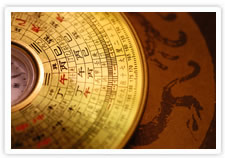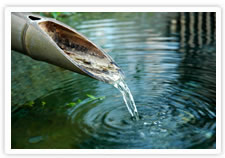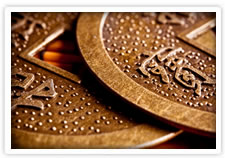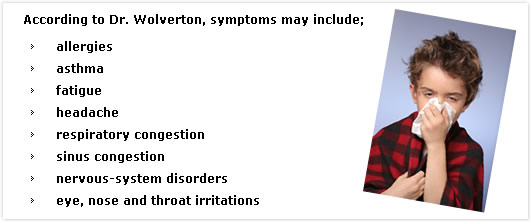



Sick Building Syndrome
The first alarm bell
Dr. B.C. Wolverton, a scientist who worked for NASA researching a breathable environment for a lunar habitat was the first to draw our attention to the possibility of Sick Building Syndrome. According to one of his studies "in 1973 the Organization of Petroleum Exporting Countries (OPEC) declared an oil embargo against industrialized nations. In an effort to maximise energy efficiently and to help reduce spiraling costs, the building industry began to seal buildings."
It's been steadily downhill from there.

What can create a sick home and building?
Some major causes of sick homes and buildings are inadequate ventilation, chemical contaminants from indoor and outdoor sources, and biological contaminants. These include house dust and the contaminants that attach to dust such as mould and toxic metals; volatile organic compounds which off gas from carpets, furniture and general household and personal care products; contaminants found in your water supply; toxic building materials; exposure to electrical fields (EFs), electromagnetic radiation (EMFs), and radio frequencies from common household appliances; harmful ingredients contained in personal care and general household products you use on a day to day basis. (Bijlsma 2008)
Exposure to all of the above sick building signals may be, in small to significant amounts on a day to day basis slowly chipping away at your immune system.
Just because we cannot see, hear, or directly feel electric and magnetic fields, we believe everything is ok. However, recent research in respected medical journals has uncovered evidence of potential sick building syndrome health risks such as "insomnia, headaches, chronic fatigue, depression, learning and memory problems, cancer, and childhood leukaemia" (IARC 2009).
The World Health Organization International Agency for Cancer Research (IARC 2009) has categorized extremely-low frequency electromagnetic fields as "Group 2B (possible) carcinogen." Exposure to EMF's is of particular concern because it reduces the levels of the hormone melatonin. "Melatonin is secreted by the Pineal Gland and helps to regulate the body's natural rythyms and attacks cancer producing free radicals." (McLean 2002, p.74)
The National Institute of Environmental Health Sciences convened an international panel of experts. They reported "electric and magnetic fields like those surrounding electric power lines should be regarded as a 'possible human carcinogen'." (NIEHS Report 1998).
So you see, there are many reasons to address this issue in your home or building right now.
Sick Home and Building Analysis
As part of every consultation, I check your home or building's EMF readings with a digital gaussmeter paying particular attention to the bedroom, study, and any rooms where you spend alot of time.
| Contact Carol Partridge for a consultation now on 0434 880 411 or email This email address is being protected from spambots. You need JavaScript enabled to view it. |
Recommended Reading
Healthy Home Healthy Family, is where you live affecting your health? Nicole Bijlsma
How to Grow Fresh Air, 50 Houseplants that Purify Your Home or Office.
Dr. B.C. Wolverton, Orion Publishing Group Ltd, London
Watt’s the Buzz? Lyn McLean, Scribe Publications Pty. Ltd., Victoria
References
Bijlsma, N., 2008, Sick Building Syndrome, Australian College of Environmental Studies (0108), Melbourne, Victoria
Greenpeace, Greenpeace exposes hidden poisons in our homes, (Online), 2003
Available: http://www.greenpeace.org.uk/media/press-releases/greenpeace-exposes-hidden-poisons-in-our-homes (2 June, 2008)
McLean, L., 2002, Watt's the Buzz?, Scribe Publications Pty. Ltd., Victoria
Wolverton, Dr. B.C., 1996, How to Grow Fresh Air, 50 Houseplants that Purify Your Home or Office, Orion Publishing Group Ltd, London
World Health Organisation, Extremely Low Frequency Fields Environmental Health Criteria Monograph No. 238, (Online), 4 September 2008-last update, Available: http://www.who.int/peh-emf/publications/elf_ehc/en/index.html (17 September, 2009) 





